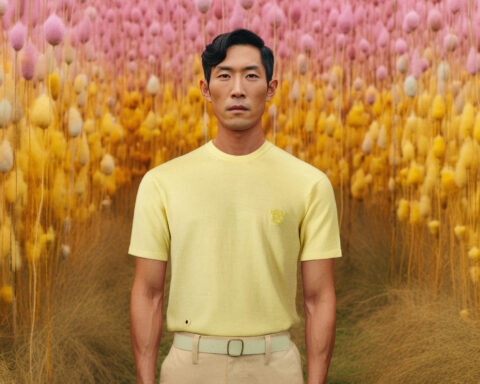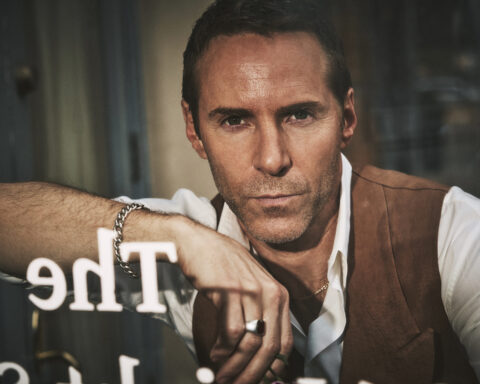Often the people who claim to love fashion the most are the ones who get the most stressed about it. We love to look good but spend too much time worrying about how to do it. We love to shop but feel guilty about our splurges.
It doesn’t have to be like this.
There are more and more great sustainable clothes brands out there — and resources to help us find them — to allow us to make more conscientious decisions about how and where we spend our money.
But the best route to a sustainable wardrobe — and clearer mind — is to develop a confident, consistent style. It helps us to detach our desire to look and feel good from our impulse to constantly buy new stuff and try to change who we are. It’s quality over quantity. These deliberate decisions are part of what people are now calling ‘mindful dressing.’
Of course, many of us already dress mindfully without realizing it. Let’s consider some of the coolest men on the planet. Actor James Dean was known for his trademark style — jeans, a crisp white t-shirt and lightweight jacket. Designer Tom Ford is rarely seen in anything but a beautifully tailored suit. The White Stripes’ star Jack White built his band’s entire brand with his wardrobe of black, white and red. And Johnny Cash didn’t become known as the Man in Black by experimenting with pastel colors in the Spring. But not all style icons with a signature style keep it simple. Jimi Hendrix made psychedelic patterns, flamboyant military jackets and flares his uniform.

Mindful doesn’t have to be boring. Jimi Hendrix in 1967 // 📸: King Collection/Photoshot/Retna/Newscom/The Mega Agency
While their styles are all different, these guys have a lot in common. None of them are chasing the new fashion fad or buying some flashy new sneakers that don’t fit with their style because they are in a half price sale.
Shopping and dressing mindfully has similar benefits to mindfulness in other areas of our lives. It’s about shutting out the unhelpful noise and acting deliberately and with purpose. It’s about not being too influenced by others around us and being confident in our choices. And in doing that, we will have better self-esteem, less stress and ultimately better style.
Here are five tips to help us shop and dress more mindfully.
Don’t be afraid to wear the same thing
There’s a reason many of the world’s most successful people wear the same thing every day. Apple founder Steve Jobs was always dressed in a turtle neck, jeans and New Balance sneakers. He knew he had a limited capacity of brainpower to make decisions and wanted to direct his creativity at his work. His simple, functional yet aesthetically pleasing style was part of Apple’s powerful brand.
When on duty, Barack Obama almost always worethe same navy blue, two-button suit tailored by Hartmarx, a 121-year-old Chicago-based company and the largest suit maker in the United States. And the former President says in an interview with Vanity Fair:”You need to focus your decision-making energy. You need to routinize yourself.”
Neither of these men are natural fashion icons. But by finding a solid look and sticking to it, their style was respected while attention focused on their work.
If something doesn’t look or feel good, get rid of it
How many times have we put on that fancy item we bought in the sale, only to take it off again and return to our go-to favorite? It could be a bit too small, or big, or just too fancy. We should stop trying to force ourselves to fit into our clothes and just wear clothes that fit — and that applies to our style and body shape. We are wasting time and energy that could be better spent elsewhere.
We all need a few lesser-used items for vacations, particular weather, special occasions or activities. But generally, if we haven’t worn an item in six months or so then get rid of it. Either take it to a charity shop — which will help someone in need and our tax returns — or sell it on a platform like Poshmark or Grailed.
In recent years, Marie Kondo has become the queen of organization with her books and Netflix show about decluttering our lives using the KonMari method. And while her techniques are a little extreme —we all need a few t-shirts that don’t give us “a thrill of joy when we touch it” — there is certainly something to be said for an organized home encouraging a clearer mind. And there is also definitely value in considering how clothes make us feel, not just look.
Take care of your clothes
Of course, the most effective way to shop sustainably is to shop less. And in order to do that we should take care of the clothes we love so we won’t have to replace them as soon.
Designer Stella McCartney recommends only washing clothes when you absolutely have to. She says: “Don’t just chuck stuff into a washing machine because it’s been worn.” And Orsola de Castro of Fashion Revolution, a sustainable fashion activism movement, advises spot-cleaning stains and taking clothes into the shower to be steamed to freshen them up.
And if clothes we love develop breaks and tears then embrace them or fix them. Holes can give jeans and t-shirts character. Or fixing rips with patches can give items a new look and lease of life. And taking a well-loved pair of shoes to a bootmaker to be resoled can be more satisfying than buying new ones.
Shop with purpose
Most fashion fans enjoy shopping, and we do too. But it is far more satisfying to shop with purpose than chasing trends and bargains with a scattergun approach.
Psycologist April Lane Benson, author of To Buy or Not To Buy, specializes in the treatment of compulsive shopping disorder. She suggests planning any shopping experience — whether online or at the store — and only buying things we have considered properly and can afford. She says:“Before you make any purchase, there’s always time for a ‘mindful pause.’ This mindful pause is key to creating space between your impulse and the action of buying.”
Also consider the quality of the item, the ethos of the brand, how long it will last and how we will use it. We feel much better if we make purchases that fit with our personal style and lifestyle and become well-used and well-loved than making impulse buys then trying to change our lives or style to fit the the product.
Be confident
Once we have made decisions about the clothes we keep, buy and wear then be confident in our choices. There is lots of noise telling us we should look different or act different but we should shut out that chatter.
Fashion and style can be dismissed as a frivolous pursuit but studies have found our choice of clothes are important to how we feel and are perceived.
But we should be in control of these thoughts and feelings and make positive, confident decisions, rather than getting too caught up in outside influences and letting them dictate to us how to dress and behave.











